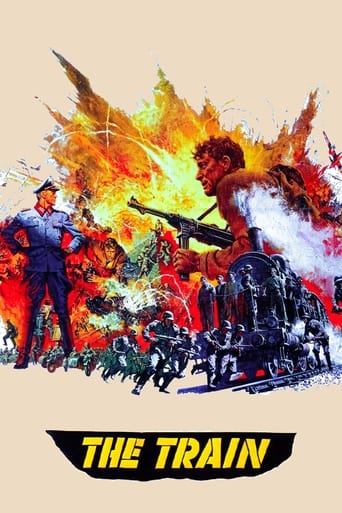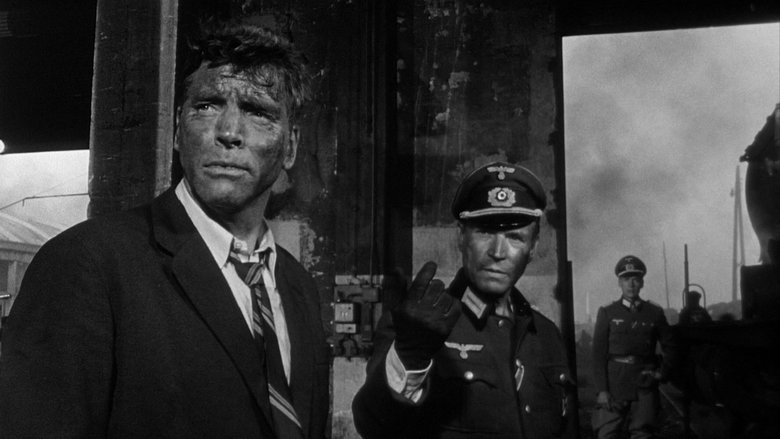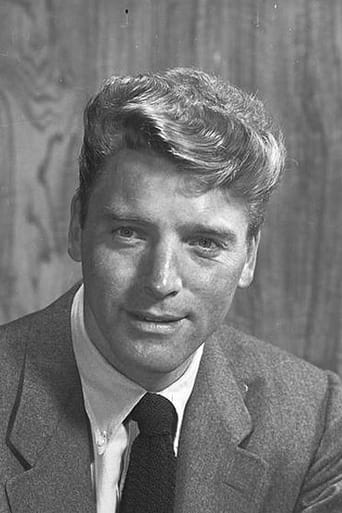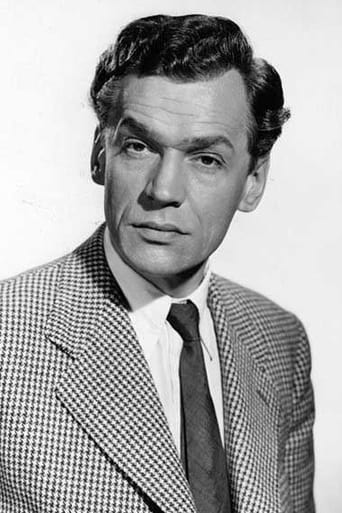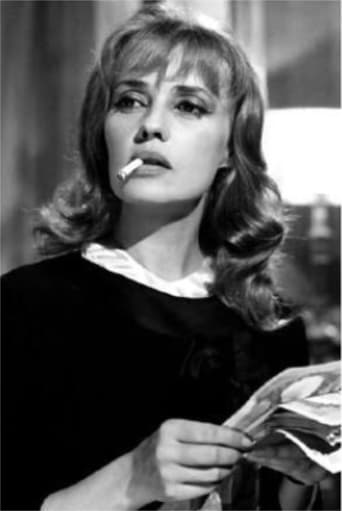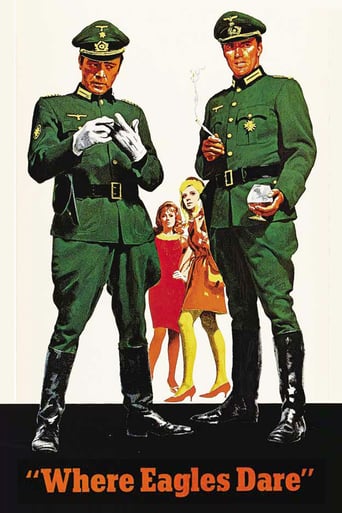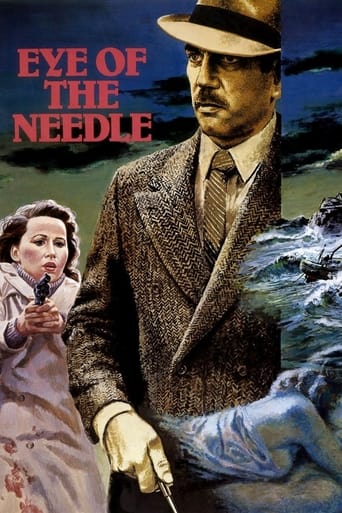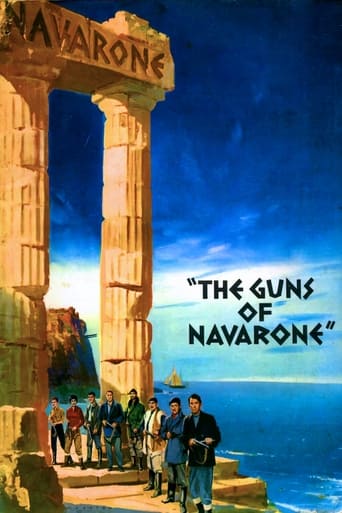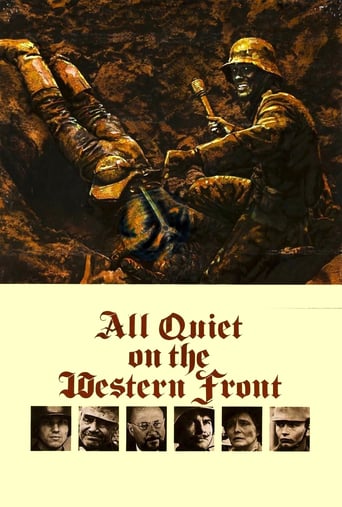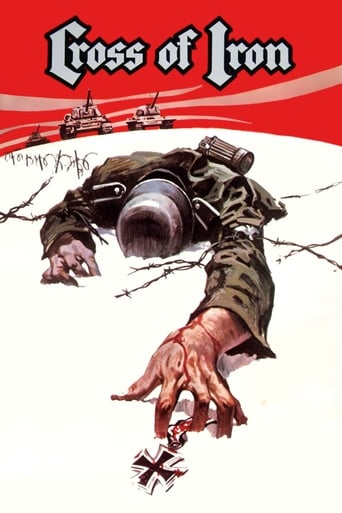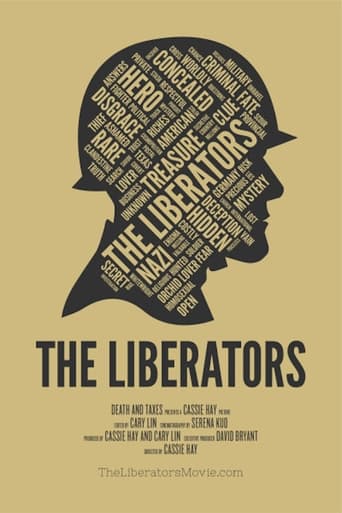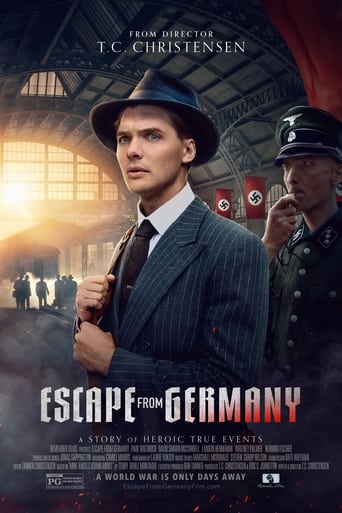The Train (1965)
As the Allied forces approach Paris in August 1944, German Colonel Von Waldheim is desperate to take all of France's greatest paintings to Germany. He manages to secure a train to transport the valuable art works even as the chaos of retreat descends upon them. The French resistance however wants to stop them from stealing their national treasures but have received orders from London that they are not to be destroyed. The station master, Labiche, is tasked with scheduling the train and making it all happen smoothly but he is also part of a dwindling group of resistance fighters tasked with preventing the theft. He and others stage an elaborate ruse to keep the train from ever leaving French territory.
Watch Trailer
Cast


Similar titles
Reviews
The movie is about a episode that happened in 1944. When France was still occupied by the Nazis, they decided to steal paintings from the Paris museums. This film is about a shipment that the French has to save before he ends to Germans, but they also don't want to be destroyed in the process.Burt Lancaster stars as a French train engineer that has to transport the shipment. At first is not a easy task, but he succeeds in the end. Meanwhile he becomes friend with a hotel owner played by French actress Jeanne Moreau (that passed away last year). And the other members of the cast are fine. Paul Scofield as a German general is great (and Scofield also starred in other great movies after this), and it was a treat seeing French comedian Michel Simon in a war movie (just like Bourvil in THE LONGEST DAY).This movie had great direction by John Frankenheimer, great performances by all the actors, and also great photography in Black and White. Although a bit dragged in some places, it was still great to watch! And as a fan of the history from 1850 until these days, I liked the movie for his accuracy and his action scenes.
Not being a general fan of war movies, this vintage treasure grabbed me as very special. There's a true story as the backbone but this goes way beyond a procedural recounting of the history, and the drama and acting performances take the centre stage. Lancaster is tough, gritty, embodying the character as the Resistance leader. There as so many great characters and actors and with the astounding special effects of rail yard bombs and screaming steam trains it's all crammed in to this lavish production. The human cost of standing up to the Nazi's is made clear and the heroism of the lowly foot soldiers like station masters and engineers is evident. The writing is impeccable, and there is even a relatively sympathetic characterisation of the nonetheless still brutal German officer. There's jeopardy and death left right and centre, and what I found the crowning achievement is that it's an intelligent film, which even poses the question as to what the point of all the suffering was for, for Art? For French national glory? Indeed what was the point of the war at all, with a poetic final scene.
During WWII, in the final day of the German occupation of France, a German colonel and a true art lover, Col. Von Waldheim (Paul Scofield), orders his troops to crate and transport all the great impressionistic paintings (from the Jeu de Paume Museum) that he can possibly get his hands on. These paintings are not only among the best in the world, they are worth millions in Reichsmarks. The crated paintings are loaded onto a train to be sent to Germany. But, the train must arrive in Germany before the Allies liberate France. While von Waldheim is obsessed with getting the train OUT of France, the French Resistance, represented by Labiche (Burt Lancaster), becomes equally determined to keep the train IN France while waiting for the Allied liberation. Very few in the Resistance understand the artistic value of the cargo, but they know that it represents 'their nation's honor' and see how valuable it must be, based on von Waldheim's determination to have it. And, while the Germans control the trains, the railroad workers form a great network of Resistance fighters.The Resistance does everything in its power to sabotage their own rail system and lead the Germans away from Germany. Small French towns are 're-labeled' to make the Germans (riding on the train) think that they are going one way when they are really going in another; trains are re- routed by conductors, switchmen, and engineers; and rail cars are separated from engines, used to block tracks and cause train wrecks. Germans, in their frustration, kill many Frenchman in retaliation. However, the battle over the train continues to the bitter end.Another Frankenheimer black-and-white masterpiece, this action movie is riveting from beginning to end. It pits the wills, skills, and ingenuity of the two principal characters in a seemly ceaseless series of cat-and-mouse ploys to control the train. The cinematography is also great. The constant imagery of trains being twisted and turned, stopped and started, heaving and letting off stem, stand in stark contrast to the art that they carry and the men that try to control them. In this movie, Frankenheimer turns trains and rails into 'living, breathing characters of steam and steel.' Scofield and Lancaster are both excellent in their opposing roles. I would rank this movie among the best movies I have ever seen!!
In August 1944, with Allied forces closing in on Paris, the German forces seize a number of art masterpieces from the Musee du Jeu de Paume and attempt to move them by train to Germany. The officer in charge of the operation, Colonel Franz von Waldheim, orders Paul Labiche, a French railway official, to arrange the shipment. Unknown to the Germans, Labiche is also a member of the Resistance, and Mademoiselle Villard, the curator of the Museum, asks him and his cell to delay the train until Paris has been liberated. At first Labiche is unwilling to help her as this will mean putting human lives at risk for the sake of what he considers "mere paintings", but later changes his mind after Papa Boule, an elderly engine driver, is executed for attempting his own private act of sabotage. (This story is, very loosely, based upon true events).It would appear that the film's original director, Arthur Penn, was sacked and replaced by John Frankenheimer at the behest of by its star Burt Lancaster, who wanted to turn it into more of an action movie, which he felt would do better at the box-office. (Lancaster and Frankenheimer had earlier worked together on "The Birdman of Alcatraz" and "Seven Days in May). As a result, the script was also rewritten. I would not generally approve of this sort of ego-driven string-pulling by movie stars, especially when a director as gifted as Penn is one of its victims, but have to admit that in this particular case it had some interesting consequences. Lancaster certainly got his action sequences, and some of them are spectacular. A train crash was staged using real trains, and an Allied air raid on a rail yard was filmed by blowing up a real rail yard. (The French railway authorities had long wanted to demolish it but had lacked the funds to do so before the film company did the job for them).In the film as originally conceived, Labiche was to have been an art lover, risking his life to save his country's artistic heritage. In the film as actually made he is not particularly interested in art and has never visited the museum to see the pictures which he is now trying to save. He is motivated by, at most, a patriotic view that the Germans should not be allowed to steal anything belonging to the French state. It is Waldheim who is the art lover. This does not mean that he is a "good German". In many ways, especially his cruelty and disregard for human life, he is a typical Nazi. In one respect, however, he is very untypical of the Nazis indeed. The looted art works are all by Impressionist or Post-Impressionist artists like Renoir, Monet, Van Gogh and Cezanne, whom the Nazis despised as degenerate. Waldheim does not despise these artists at all- he loves them with a passion. Although he tries to justify his operation to his superiors in terms of the financial value of the paintings, suggesting that the Germans might use them as a bargaining-chip in peace negotiations, it is clear that he is driven more by his private obsession than by any political or military considerations. His attitude becomes clear in his final arrogant speech to Labiche: "A painting means as much to you as a string of pearls to an ape..... The paintings are mine. They always will be. Beauty belongs to the man who can appreciate it".It seems odd that a film about art should have been made in black-and-white (something fast falling into disuse in the mid-sixties), but I think that Frankenheimer's choice was the right one. We only see the pictures themselves for short periods, and the gritty monochrome photography seems appropriate to the railway stations, marshalling yards, industrial premises and working-class neighbourhoods which form the backdrop to much of the film. One could almost describe it as a kitchen-sink action movie.We cannot know how Penn's projected film might have turned out, but Frankenheimer's is certainly a very good one. At its heart are two excellent performances from Lancaster as Labiche and Paul Scofield as Waldheim. The increase in the number of action sequences does not detract from the film's central moral question; can the preservation of a work of art, however, valuable, justify the loss of a single human life? (This is a question which has once again taken on relevance with the recent deliberate destruction by ISIS and other militant Islamic groups of artworks deemed offensive or un-Islamic). The film also raises a second question: can any moral value be ascribed to the appreciation of great art when a knowledgeable connoisseur like Waldheim can also be an amoral brute? These two questions are probably unanswerable- certainly no definitive answer could ever be given- but that does not mean we should not ask them. "The Train" is a rare example of a wartime adventure which combines action not just with kitchen-sink realism but also with philosophical depth. 8/10 An odd coincidence. I doubt if the use of the name "Waldheim" for the film's villain seemed in any way remarkable in 1964. After, however, subsequent revelations about the wartime career of Kurt Waldheim, the former UN Secretary-General and Austrian President, the scriptwriter seems to have been strangely prescient in choosing that particular surname.

